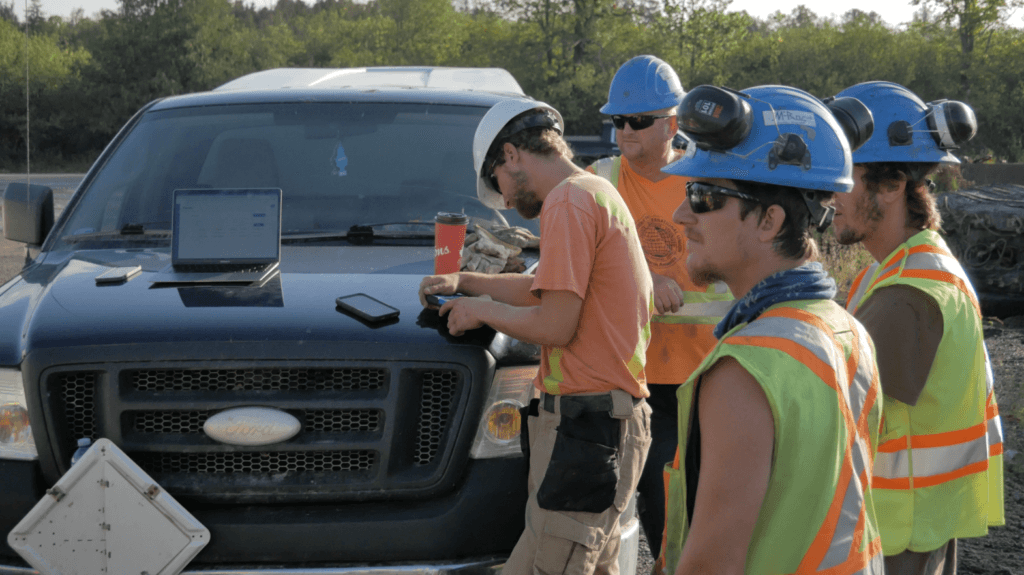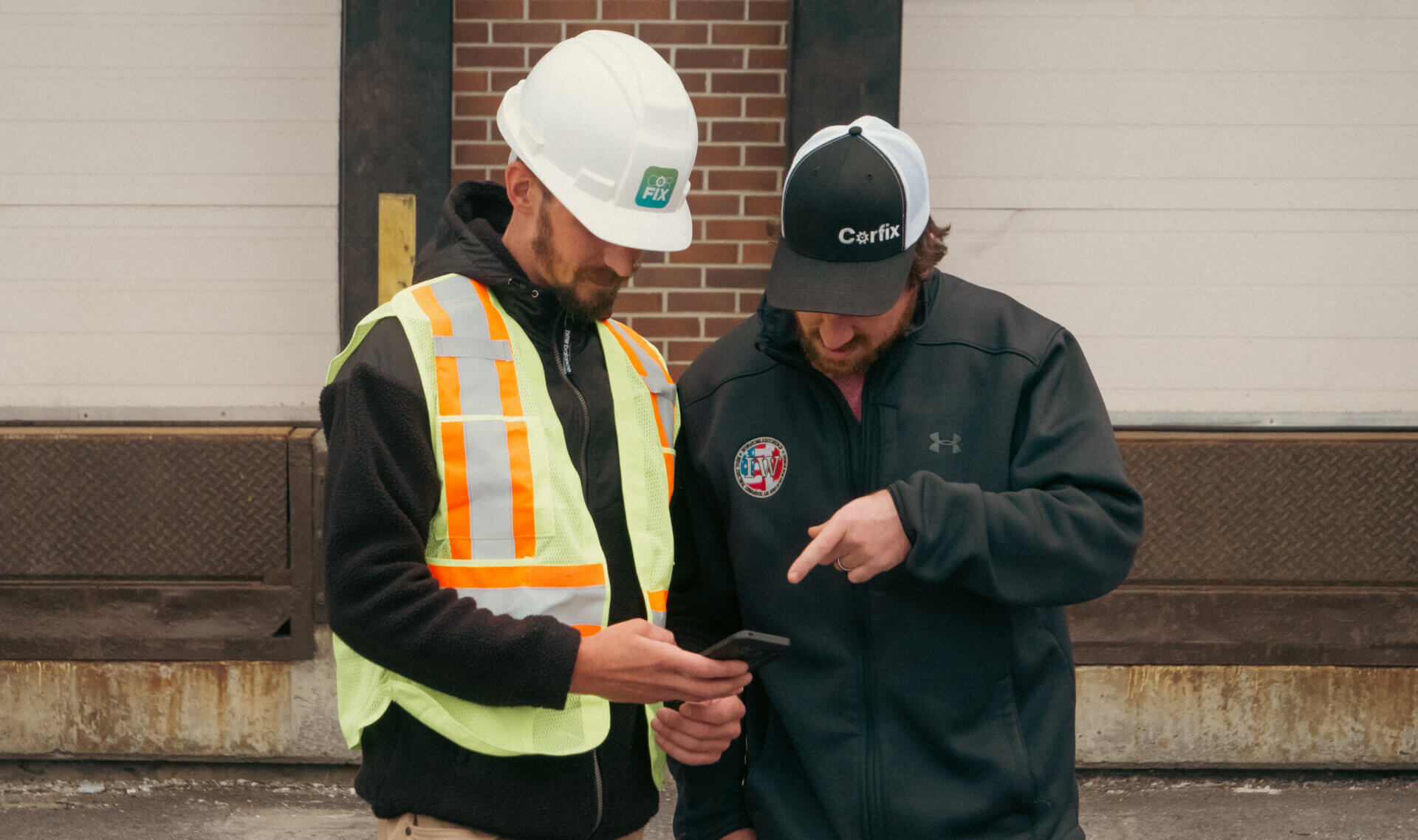As technology becomes a standard part of doing business, companies are faced with the tricky process of transitioning to construction management software. So what’s the best way to make the software implementation as easy as possible for your construction crew?
Here are the steps to a foolproof strategy to make your business’ digital transformation a success.
- Make a Technology Plan
- Get Buy-In from Key Stakeholders
- Communicate to Staff
- Understand Your Users
- Provide Training & Support
- Gamify and Incentivize Your Team
- Roll-Out a Turnkey Solution
- Monitor and Evaluate
1. Make a Technology Plan
Before you even think about announcing your transition to construction management software to your staff, make sure you’ve thought the project all the way through. Develop a plan for how the software will fit into your current processes and workflows.
Audit your existing processes and identify what day-to-day field and office activities will be transitioning to digital. Here are some examples of processes that could be improved with software:
| Field Activities | Office Activities |
|---|---|
|
|
You should be able to tell each of your employees how, when, and where they’ll be using the technology throughout their work day. This plan should also include the timeline for implementation, the resources they’ll need, and how the new technology will be integrated into the existing processes.
Most fear of change is based on fear of the unknown, so the more answers you can provide, the more comfortable your employees will be.
2. Get Buy-In from Key Stakeholders
Identify Key Stakeholders: Clearly outline who the key stakeholders are for the implementation of the construction management software. This includes not only upper management but also department heads, project managers, site supervisors, and any other individuals who will be directly impacted by the software.
Conduct Stakeholder Analysis: Perform a thorough analysis of each stakeholder’s interests, concerns, and potential objections regarding the implementation. This will help tailor your communication strategy and address their specific needs and pain points.
Create a Stakeholder Engagement Plan: Develop a detailed plan outlining how you will engage with each stakeholder throughout the implementation process. This should include regular communication channels, such as meetings, presentations, and progress updates, as well as opportunities for feedback and input.
Highlight the Benefits: Clearly communicate the benefits of the construction management software to each stakeholder group, emphasizing how it will address their specific pain points and improve their workflow efficiency. Utilize concrete examples whenever possible to illustrate the tangible impact of the software. This is covered more in the next section.
Address Concerns and Objections: Anticipate potential objections or concerns from stakeholders and proactively address them in your communication plan. This may involve providing additional information, offering demonstrations or trials of the software, or arranging meetings with subject matter experts to address specific questions.
Secure Commitment and Support: Seek commitment and support from key stakeholders by clearly outlining their roles and responsibilities in the implementation process. Encourage active participation and engagement to ensure buy-in and ownership of the project’s success.
Provide Training and Support: Assure stakeholders that adequate training and support will be provided to help them navigate the new software effectively. Offer training sessions, user manuals, and ongoing technical support to address any challenges or concerns that may arise during the transition period.

3. Communicate the Benefits
Make sure your staff understands the benefits of the new technology to both the business and (maybe more importantly) to them individually. Yes, we’re all team players but if you really want to motivate your employees, let them know how this new tech is going to make their life easier and better,
On a macro level, your story should explain what the company hopes to gain, such as increased productivity, improved efficiency, and cost savings. To get people on board in the face of that discomfort they need to understand why the change is necessary and why it will be worthwhile to them.
On a micro level, tailor the message to different departments and different roles, highlighting how they will specifically be benefitted by this change.
Use this table to help you craft the right message and give your stakeholders concrete reasons to champion the adoption of construction management software, and reasons they can pass along to their teams.
| Benefits to the Company | Benefits to the Stakeholders | Benefits to the Team |
|---|---|---|
| Streamlined project management:
Centralizing tasks, documents, and communication in one platform enhances efficiency, reduces errors, and fosters better collaboration across teams. |
Office Administrators:
Simplified document management and payroll integration streamline administrative tasks, freeing up time for other responsibilities. |
Simplified documentation:
Intuitive interfaces and streamlined processes make it easier for team members to navigate documents, manage approvals, and track signatures efficiently. |
| Improved productivity:
Advanced features like time tracking, task management, and digital documents optimize workflows, resulting in accelerated project timelines and increased output. |
Site Supervisors:
Streamlined oversight of day-to-day tasks and activities with a view of who is on site, what they are working on, and if there are any outstanding forms or inspections. |
Clear expectations:
Task management features provide clarity on roles, responsibilities, and deadlines, reducing confusion and minimizing errors. |
| Enhanced compliance and risk management:
Robust document management ensures that all necessary forms, certifications, and inspections are up to date, mitigating compliance risks and avoiding potential penalties. |
Health & Safety Managers:
Comprehensive compliance management and proactive risk mitigation tools facilitate timely incident reporting and preventive measures, ensuring a safer work environment and minimizing liabilities. |
Elimination of wage theft:
Digital time cards with punch in/out features provide accurate tracking of hours worked, ensuring fair compensation for employees’ efforts. |
| Optimized resource allocation:
Access to asset directories and project overview dashboards provides valuable insights into resource utilization, enabling more informed decision-making and cost-effective project management. |
Project Managers:
A holistic view of the project will enable them to monitor progress, allocate resources effectively, and make informed decisions to ensure project success. |
Easily Accessible Project Information:
On-the-go access to key project details ensures that team members can quickly retrieve necessary documents and emergency information. |
4. Understand Your Users, from Gen-Z to Boomers
Choosing the right construction management software is just the beginning; ensuring its seamless adoption across your team is crucial for maximizing its benefits. While selecting the software, it’s essential to consider the diverse needs and preferences of your users, spanning different generations.
Mapping Tech Adoption: Recognize that ease of adoption often aligns with generational experiences. Gen-Z employees, born into a digital world, tend to adapt quickly to new technology. Millennials, who straddle the digital divide, possess both tech fluency and adaptability. Meanwhile, Boomers, accustomed to traditional methods, may initially resist change.
Empathy and Education: Acknowledge the varying comfort levels with technology among your team members. Provide tailored support and resources to address the specific needs of each group. For younger employees, focus on intuitive user interfaces and mobile accessibility. Offer training sessions and tutorials for older employees to familiarize them with the software’s functionalities gradually.

Beta Testing: Before implementing the software company-wide, conduct beta testing with a small group of users representing different demographics. This allows you to gather valuable feedback, identify potential challenges, and refine the user experience accordingly. Engage stakeholders from diverse age groups in this process to ensure their concerns are addressed early on.
Slow Roll Out: Another idea is to introduce the tech to one or a few select members of different teams/projects/departments across the company. This has the advantage of ensuring each group will have a champion who is familiar with the product when you roll it out company wide and can be the go-to for their team.
By understanding and catering to the unique preferences and abilities of your users, you can facilitate smoother adoption of the construction management software across your organization. Empathy, education, and proactive testing are key to bridging generational gaps and driving successful implementation.
5. Provide Training and Support
Training is a crucial step to ensure your team is comfortable using the new technology. This can include online tutorials, in-person training sessions, and contact details for support from the software provider.
While you’re busy training and supporting your staff, your new tech provider would ideally be training and supporting you. Some companies have embedded training programs designed to help you and your employees get up and running as quickly as possible. Here at Corfix, our onboarding program takes a tiered approach to rolling out your new software. We work with a company’s leadership team and staff directly to make sure there is maximum adoption.
Once you know the types of users you have, it can really help to strategically group your staff so that your technophobes have at least one person in their vicinity who is an adept and enthusiastic user.
In addition to different levels of familiarity with technology (see point 4) people have different styles of learning that should be taken under consideration when designing training. Create an onboarding process that has features that apply to auditory, visual, and kinesthetic learners (e.g. “learn by doing” types). The trick is to have a range of learning materials – documents and written content, live training, and hands-on demonstrations.
6. Gamify and Incentivize
Depending on the size of your team, you can take a page from the books of successful mobile apps like DuoLingo and FitBit. They have taught us that you can turn even the most boring and undesirable tasks into a game; people will do anything – including exercising and learning French.
Here are a few suggestions to get you started:
- Inject gaming features, such as leaderboards, points tables, and badges into the training
- Challenges between employees or teams with rewards and incentives to motivate engagement and participation
- Rewards like limited-time special privileges (first dibs at new assignments, extra doughnuts at morning coffee break, not having to do whatever the most annoying job task is this week)
7. Provide a Turnkey Solution
Populate your software with all the relevant data for your users. To use our onboarding as an example, our clients see the most success when they seed their platform with projects, job sites, equipment, the forms employees will be filling out, worker data, etc. The faster they can start using – and getting value out of – their new technology, the higher the likelihood of a successful adoption.
This also makes the training process easier, especially for your kinesthetic learners (the ‘learn by doing’ ones) who can interact with the software hands on if it’s already operational.
8. Monitor and Evaluate
Monitor the use of the new technology and evaluate its effectiveness. This will help identify any areas where additional training or support is needed and ensure the technology is being used to its full potential. As part of your initial planning stage, intersperse steps with these pauses to take inventory and ensure everyone is comfortable with what they’ve learned before going any further. If there are issues, this means you get to make tweaks to your training process so future steps work more effectively.
Conclusion
In conclusion, implementing construction management software is not just about selecting the right technology—it’s about empowering your team and driving organizational success. By following the actionable steps outlined in this guide, from understanding your users’ diverse needs to securing buy-in from stakeholders, you can navigate the implementation process with confidence.
Remember, successful adoption requires more than just technological proficiency; it requires empathy, communication, and a commitment to continuous improvement. By prioritizing user experience, addressing concerns proactively, and leveraging the full potential of your team, you can harness the transformative power of construction management software to streamline operations, enhance productivity, and drive business growth.
As you embark on this journey, stay agile, remain open to feedback, and celebrate milestones along the way. With careful planning, effective communication, and a shared vision for success, you can position your organization for a future of innovation, efficiency, and excellence in the construction industry.

